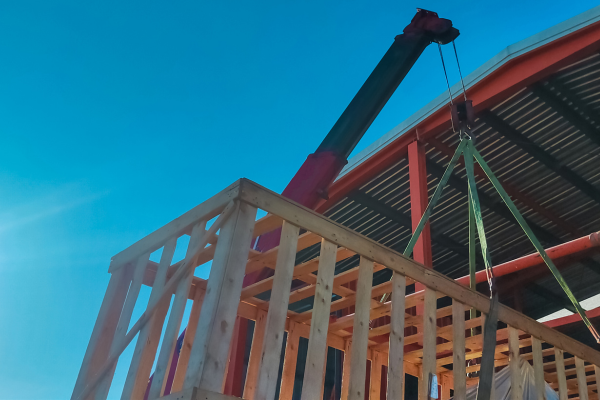100 %

Jun 13,2023
In material handling and lifting operations, lifting slings play a vital role in ensuring safety, stability, and efficiency. These indispensable tools are designed to securely hoist heavy loads, providing support and control during lifting procedures. However, like any equipment, lifting slings have a finite lifespan and require careful attention to maintain reliability. In this article, we will delve into the factors that influence the lifespan of lifting slings, empowering you with the knowledge to make informed decisions and uphold safety standards.
The lifespan of a lifting sling is significantly influenced by the quality of materials used in its construction. High-quality materials, such as polyester or nylon, are known for their strength, resistance to abrasion, and durability. The integrity and resilience of the fibers contribute to a longer lifespan, ensuring the sling can withstand repeated use and heavy loads without compromising safety.
Regular inspection and maintenance are crucial for prolonging the lifespan of lifting slings. Here are some key practices to follow:
Conduct a visual inspection before each use to identify any visible signs of wear, such as cuts, abrasions, or frayed edges. Pay special attention to areas of the sling that come into contact with sharp edges or rough surfaces.
Keep your lifting slings clean and free from contaminants that could weaken the fibers. If necessary, follow the manufacturer's guidelines for cleaning procedures.
Store slings in a clean, dry, and well-ventilated area to prevent moisture buildup, which can lead to mold or mildew growth. Avoid exposing slings to direct sunlight or extreme temperatures.
Ensure slings are handled carefully during use to avoid unnecessary strain, twisting, or kinking. Avoid dragging slings across rough surfaces or using them for purposes other than lifting.
The frequency of use directly impacts the lifespan of lifting slings. Regular and frequent use may lead to accelerated wear and tear, shortening the sling's lifespan. Conversely, infrequent use can prolong the lifespan, provided the slings are properly stored and maintained during inactivity. It is important to strike a balance by monitoring the condition of slings regularly and retiring them when necessary.
The working conditions in which lifting slings are utilized significantly affect their lifespan. Factors such as temperature extremes, exposure to chemicals, sharp edges, or abrasive surfaces can impact the integrity of the sling's fibers. Harsh conditions can accelerate aging and weaken the sling, reducing its lifespan. It is essential to assess the working environment and select appropriate slings for the specific conditions.
The load capacity of lifting slings is essential for ensuring safe lifting operations. Exceeding the rated capacity of a sling places excessive stress on the fibers, compromising their structural integrity and shortening their lifespan. It is crucial to understand and adhere to the load capacity guidelines provided by the manufacturer to prevent premature wear and failure.
Understanding the factors that impact the lifespan of lifting slings is crucial for maintaining safe and efficient lifting operations. By considering material quality, conducting regular inspections and maintenance, evaluating working conditions, and adhering to load capacity guidelines, you can maximize the lifespan of your lifting slings and ensure the safety of personnel and loads. Safety should always be the top priority when working with lifting slings. Stay vigilant, follow best practices, and replace slings when necessary to uphold the highest safety standards in your lifting operations.
It is generally not recommended to repair damaged lifting slings. Any sign of damage or wear should be addressed by replacing the sling to ensure safe lifting operations. Using damaged slings can lead to accidents and injuries.
Lifting slings should be visually inspected before each use and periodically inspected by a qualified professional. The frequency of inspections may vary depending on factors such as the intensity of use, working conditions, and industry regulations. Consult industry standards and guidelines to determine the appropriate inspection schedule for your lifting slings.
Signs of sling wear or degradation may include cuts, abrasions, fraying, discoloration, stiffness, or loss of elasticity. If you notice any of these signs during the inspection, the sling should be retired and replaced immediately.